Themed collection Fragment and localized orbital methods in electronic structure theory

Fragment and localized orbital methods in electronic structure theory
New fragment and local correlation methods in electronic structure theory are providing new insights into macromolecules and the condensed phase.
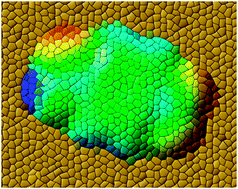
Phys. Chem. Chem. Phys., 2012,14, 7559-7561
https://doi.org/10.1039/C2CP90072F
Comparison of explicitly correlated local coupled-cluster methods with various choices of virtual orbitals
Local coupled-cluster methods with pair natural orbitals and explicitly correlated terms approach the CCSD/CBS limit quickly with small domains and basis sets.
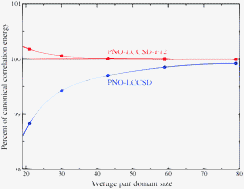
Phys. Chem. Chem. Phys., 2012,14, 7591-7604
https://doi.org/10.1039/C2CP40231A
An elongation method for large systems toward bio-systems
The elongation method, proposed in the early 1990s, originally for theoretical synthesis of aperiodic polymers, has been reviewed.
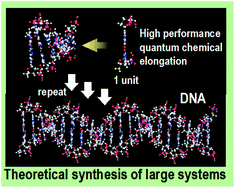
Phys. Chem. Chem. Phys., 2012,14, 7640-7668
https://doi.org/10.1039/C2CP24033E
How does it become possible to treat delocalized and/or open-shell systems in fragmentation-based linear-scaling electronic structure calculations? The case of the divide-and-conquer method
The procedure of the linear-scaling DC-UHF/UDFT method, which is capable of treating delocalized and/or open-shell systems.
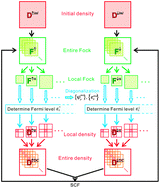
Phys. Chem. Chem. Phys., 2012,14, 7629-7639
https://doi.org/10.1039/C2CP40153C
Exploring chemistry with the fragment molecular orbital method
Method development and applications of FMO to various chemical systems are reviewed.
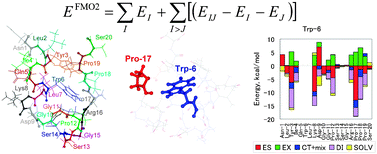
Phys. Chem. Chem. Phys., 2012,14, 7562-7577
https://doi.org/10.1039/C2CP23784A
Practical quantum mechanics-based fragment methods for predicting molecular crystal properties
Fragment-based electronic structure methods are creating new, computationally affordable opportunities for accurately modeling molecular crystal structures and properties.
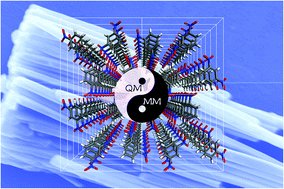
Phys. Chem. Chem. Phys., 2012,14, 7578-7590
https://doi.org/10.1039/C2CP23949C
Wavefunction-based electron correlation methods for solids
There exists a hierarchy of methods for the calculation of electron correlation effects in solids at moderate computational costs.
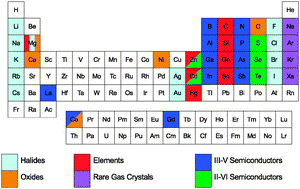
Phys. Chem. Chem. Phys., 2012,14, 7605-7614
https://doi.org/10.1039/C2CP24020C
CRYSCOR: a program for the post-Hartree–Fock treatment of periodic systems
CRYSCOR, an efficient periodic post Hartree–Fock program to study electron correlation in crystals from first principles.
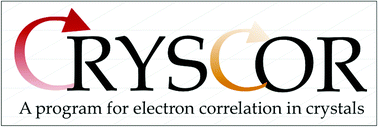
Phys. Chem. Chem. Phys., 2012,14, 7615-7628
https://doi.org/10.1039/C2CP23927B
Fragment occupations in partition density functional theory
We discovered situations where strictly integer fragment occupations arise in Partition-Density-Functional Theory. We explain why this happens, and discuss consequences.

Phys. Chem. Chem. Phys., 2012,14, 7780-7786
https://doi.org/10.1039/C2CP23994A
Thermodynamic limit of the energy density in a crystal
A proof of the extensivity of energy in an electrically neutral, metallic or nonmetallic crystal.
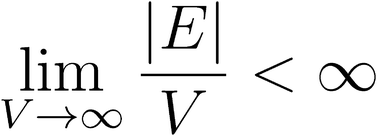
Phys. Chem. Chem. Phys., 2012,14, 7800-7808
https://doi.org/10.1039/C2CP23958B
Reference electronic structure calculations in one dimension
We explore electron correlation in continuum 1d model systems, discovering similarities and differences with 3d for small atoms and molecules.
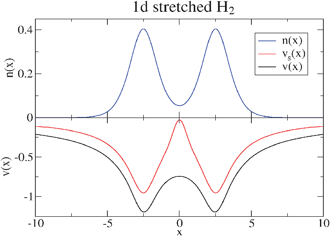
Phys. Chem. Chem. Phys., 2012,14, 8581-8590
https://doi.org/10.1039/C2CP24118H
Natural molecular fragments, functional groups, and holographic constraints on electron densities
Conditions for natural fragmentation schemes are described and some aspects of their chemical relevance are discussed.
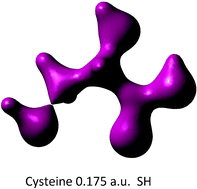
Phys. Chem. Chem. Phys., 2012,14, 8516-8522
https://doi.org/10.1039/C2CP40237H
Extended implementation of canonical transformation theory: parallelization and a new level-shifted condition
A parallelized algorithm and implementation of canonical transformation theory are presented along with a modification to the amplitude equation with inclusion of the level shift to remove the undesired intruder states.
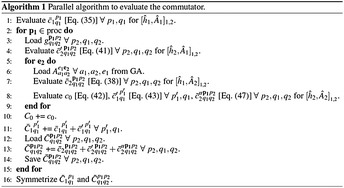
Phys. Chem. Chem. Phys., 2012,14, 7809-7820
https://doi.org/10.1039/C2CP23767A
Fragment-based quantum mechanical methods for periodic systems with Ewald summation and mean image charge convention for long-range electrostatic interactions
Fragmental QM methods with Ewald summation for periodic systems.
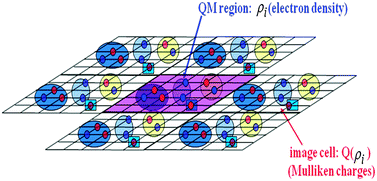
Phys. Chem. Chem. Phys., 2012,14, 7821-7829
https://doi.org/10.1039/C2CP23758J
Localized optimized orbitals, coupled cluster theory, and chiroptical response properties
A localized orbital-optimized coupled cluster method is applied to computations of optical rotations of chiral molecules.
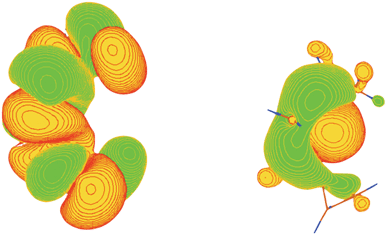
Phys. Chem. Chem. Phys., 2012,14, 7830-7836
https://doi.org/10.1039/C2CP23797K
A B3LYP-DBLOC empirical correction scheme for ligand removal enthalpies of transition metal complexes: parameterization against experimental and CCSD(T)-F12 heats of formation
A B3LYP-DBLOC empirical correction scheme has been developed for accurately and inexpensively calculating ligand removal enthalpies of transition metal complexes by systematically isolating errors in B3LYP.
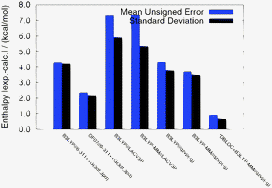
Phys. Chem. Chem. Phys., 2012,14, 7724-7738
https://doi.org/10.1039/C2CP40220C
Hybrid one-electron/many-electron methods for ionized states of molecular clusters
An accurate description of ionized states of clusters without high expense: accurate n-electron fragment wavefunctions interact via one-electron couplings.
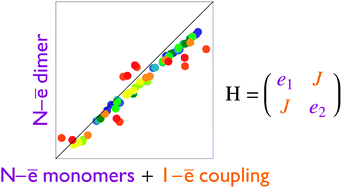
Phys. Chem. Chem. Phys., 2012,14, 7863-7871
https://doi.org/10.1039/C2CP40222J
Energy analysis of weak electron-donor–acceptor complexes and water clusters with the perturbation theory based on the locally projected molecular orbitals: charge-transfer and dispersion terms
The cumulative dispersion energy of two isomers of water hexamers.
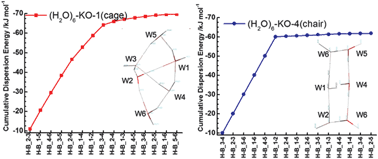
Phys. Chem. Chem. Phys., 2012,14, 7787-7794
https://doi.org/10.1039/C2CP40217C
Adsorption of a water molecule on the MgO(100) surface as described by cluster and slab models
The interaction of a water molecule with the MgO(100) surface was studied using coupled MP2, and DFT based symmetry–adapted perturbation theory in conjunction with cluster models and diffusion Monte Carlo calculations combined with slab models and periodic boundary conditions.
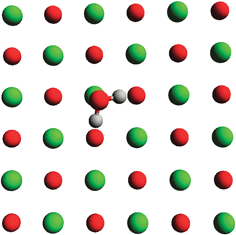
Phys. Chem. Chem. Phys., 2012,14, 7846-7853
https://doi.org/10.1039/C2CP00015F
Rapid computation of intermolecular interactions in molecular and ionic clusters: self-consistent polarization plus symmetry-adapted perturbation theory
We have developed an ab initio, systematically-improvable hierarchy of theoretical methods for describing intermolecular interactions in clusters in a computationally tractable way.
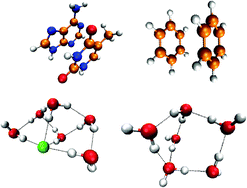
Phys. Chem. Chem. Phys., 2012,14, 7679-7699
https://doi.org/10.1039/C2CP24060B
Second-order many-body perturbation study of solid hydrogen fluoride under pressure
Linear-scaling, embedded-fragment, second-order perturbation calculations of structures, phonon dispersion, and phonon density of states of solid hydrogen fluoride under pressure.

Phys. Chem. Chem. Phys., 2012,14, 7765-7779
https://doi.org/10.1039/C2CP40236J
A refined cluster-in-molecule local correlation approach for predicting the relative energies of large systems
Two new strategies are introduced to further improve the cluster-in-molecule (CIM) method for local correlation calculations of large molecules.

Phys. Chem. Chem. Phys., 2012,14, 7854-7862
https://doi.org/10.1039/C2CP23916G
Structures, energetics and vibrational spectra of CO2 clusters through molecular tailoring and cluster building algorithm
CO2 clusters: the complete basis set limit of interaction energies and vibrational spectra at the MP2/aug-cc-pVDZ level of theory.
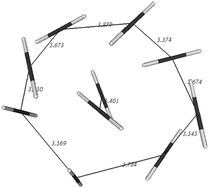
Phys. Chem. Chem. Phys., 2012,14, 7718-7723
https://doi.org/10.1039/C2CP23761J
The fragment molecular orbital and systematic molecular fragmentation methods applied to water clusters
Two electronic structure methods are presented and compared with fully ab initio results for the predicted binding energies of water clusters.
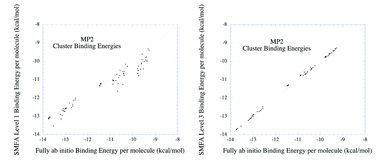
Phys. Chem. Chem. Phys., 2012,14, 7752-7764
https://doi.org/10.1039/C2CP00027J
Liquid water simulations with the density fragment interaction approach
This work demonstrates how the reformulated density fragment interaction approach can be applied for efficient and accurate simulations of liquid water.
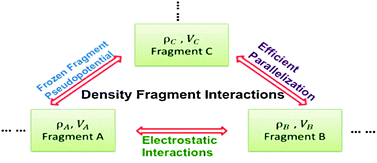
Phys. Chem. Chem. Phys., 2012,14, 7700-7709
https://doi.org/10.1039/C2CP23714H
Improving density functional theory for crystal polymorph energetics
DFT predictions of relative energies of organic crystal polymorphs are dramatically improved through a simple two-body correction scheme.

Phys. Chem. Chem. Phys., 2012,14, 7739-7743
https://doi.org/10.1039/C2CP24090D
Statistics-based model for basis set superposition error correction in large biomolecules
A statistical model is presented for quickly estimating BSSE in QM calculations of large biomolecular systems.
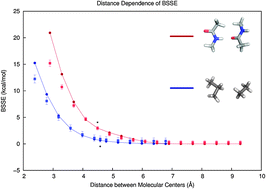
Phys. Chem. Chem. Phys., 2012,14, 7795-7799
https://doi.org/10.1039/C2CP23715F
Systematic fragmentation of large molecules by annihilation
An efficient automated procedure for estimating the ab initio electronic energies of large molecules, such as proteins, is presented.
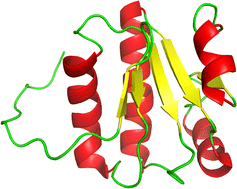
Phys. Chem. Chem. Phys., 2012,14, 7744-7751
https://doi.org/10.1039/C2CP23832B
Electrostatically embedded many-body method for dipole moments, partial atomic charges, and charge transfer
The electrostatically embedded many-body (EE-MB) method is extended to the calculation of dipole moments, partial atomic charges, and charge transfer.
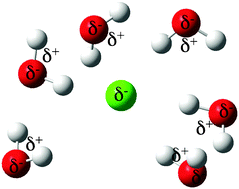
Phys. Chem. Chem. Phys., 2012,14, 7669-7678
https://doi.org/10.1039/C2CP24113G
Approximately size extensive local multireference singles and doubles configuration interaction
A new local approximately size extensive multireference singles and doubles configuration interaction (MRSDCI) method is presented.
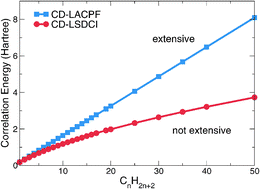
Phys. Chem. Chem. Phys., 2012,14, 7710-7717
https://doi.org/10.1039/C2CP23757A
Fragment density functional theory calculation of NMR chemical shifts for proteins with implicit solvation
Solvent effects are included in the Automated Fragmentation QM/MM calculation of protein NMR chemical shifts. The computed proton chemical shifts represent clear improvement over that from the gas phase calculation.
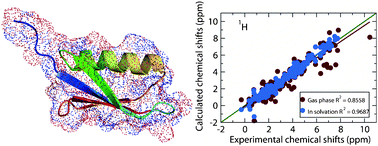
Phys. Chem. Chem. Phys., 2012,14, 7837-7845
https://doi.org/10.1039/C2CP23746F
About this collection
Fragment and localized orbital methods in electronic structure theory